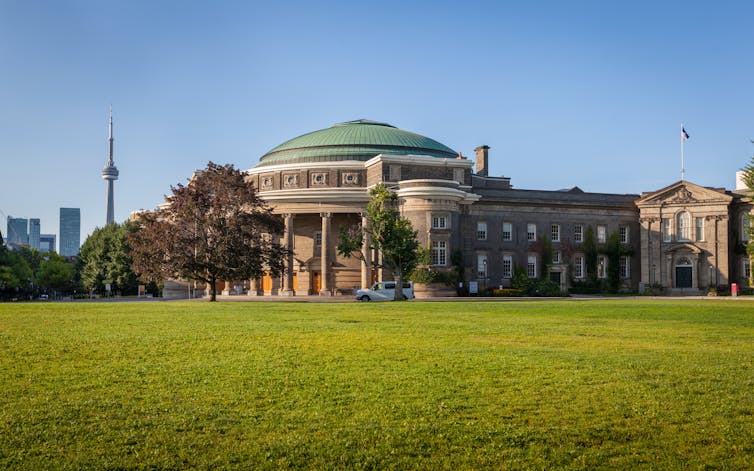
At the start of the new academic school year, around 30 students at Canadore College in North Bay, Ont. held a protest to decry the lack of accommodation provided to international students.
The protesters were demanding help from the college either to provide affordable accommodations, relocation to other campuses, online classes or a refund of the tuition they’d paid.
About 25 international students at Canadore College slept in a tent on the side of a road because they were unable to find decent, affordable housing. The college eventually met the demands of these students, but others in North Bay and across Canada continue to struggle to find decent and affordable places to live while they study.
In total, approximately 300 international students are struggling to find accommodation at Canadore and Nipissing University, also in North Bay.
Sadly, this situation is not unique, and it comes at a time when international students are being scapegoated for causing Canada’s housing crisis, stealing jobs and causing inequalities in education.
Students treated like commodities
In August, Housing, Infrastructure and Communities Minister Sean Fraser said the government was considering placing a cap on international students to ease pressure off the housing market. Despite this blame game, the facts show how reliant Canada is on international students.
In 2023, Canadian post-secondary institutions are expected to welcome around 900,000 international students, compared to about 240,000 international students in 2011. Universities and colleges have long sought international students as lucrative sources of revenue. Higher education institutions often charge international students three to five times more in tuition fees than Canadians.
Unsurprisingly, universities have voiced their opposition to a cap that could threaten their bottom line. Provinces and territories have remained cool to the idea while the Québec government has rejected it.
International students contribute more than $22.3 billion per year to the Canadian economy and are a major source of the workforce and talent needed to replenish Canada’s aging population.
Canada has presented itself as a destination of choice for international students for years. Yet, while international students are constructed as ideal professional migrants, they are treated as a commodity to fund Canada’s post-secondary institutions and tackle the labour shortage.
Students blamed for the government’s faults
Fraser also suggested that a cap would help to resolve the under-housing and victimization of international students. International students renting in Canada often experience all kinds of abuse when trying to find housing. This abuse includes price gouging, invasion of privacy, sexual harassment, assault, exploitation and illegally low living standards. Some international students have also died in house fires, overcrowded houses or through suicide.
Yet, it is because of the actions of previous governments that international students find themselves in this position. When provinces started to deregulate tuition fees for international students in the 1980s, post-secondary institutions found a new source of revenue and an incentive to attract as many as they could.
In addition, since the early 2000s the federal government has created policies designed to bring international students to Canada. These include enabling international students to work in Canada during and after their studies and eventually apply to become permanent residents.
Canada’s leaders encouraged international students to come here. And Canada’s leaders are now trying to blame them for a crisis that is not their fault.

Easy targets
International students are an easy target for scapegoating. Many are temporary migrants with little political or economic power. The scapegoating of immigrants is based on the logic that, by increasing demand for housing, they are exacerbating the housing crisis.
However, there is much more at play than newcomer demands on housing. Blaming migrants and international students draws attention away from the role of developers, municipal zoning laws and Canadian governments in perpetuating the housing crisis.
Read more: Student housing crisis: Municipal bylaws have created roadblocks for decades
Due to their precarious legal status in Canada, very few international students speak out, fearing that doing so might hurt their chances to remain in Canada.
Governments and post-secondary institutions that admit international students have a moral duty to them once they’re in Canada. It is unacceptable that students who are made to pay exorbitant tuition fees are ending up homeless and living in tents, sexually assaulted or even dead.
The demonization and xenophobia have gone too far and the scapegoating of international students has to end. International students and immigrants are not the cause of Canada’s problems. If anything, it is their money, talents and hard work that Canada relies on.
The housing crisis is a serious problem that requires serious solutions, and politicians need to stop playing the blame game.
Lilach Marom receives funding from SFU Small SSHRC (September 2023) to develop a research project exploring the education-migration of Punjabi international students in Canada.
Tania Das Gupta has received funding from Social Sciences and Humanities Research Council (SSHRC) in the past.
Soma Chatterjee and Yvonne Su do not work for, consult, own shares in or receive funding from any company or organisation that would benefit from this article, and have disclosed no relevant affiliations beyond their academic appointment.
This article was originally published on The Conversation. Read the original article.







